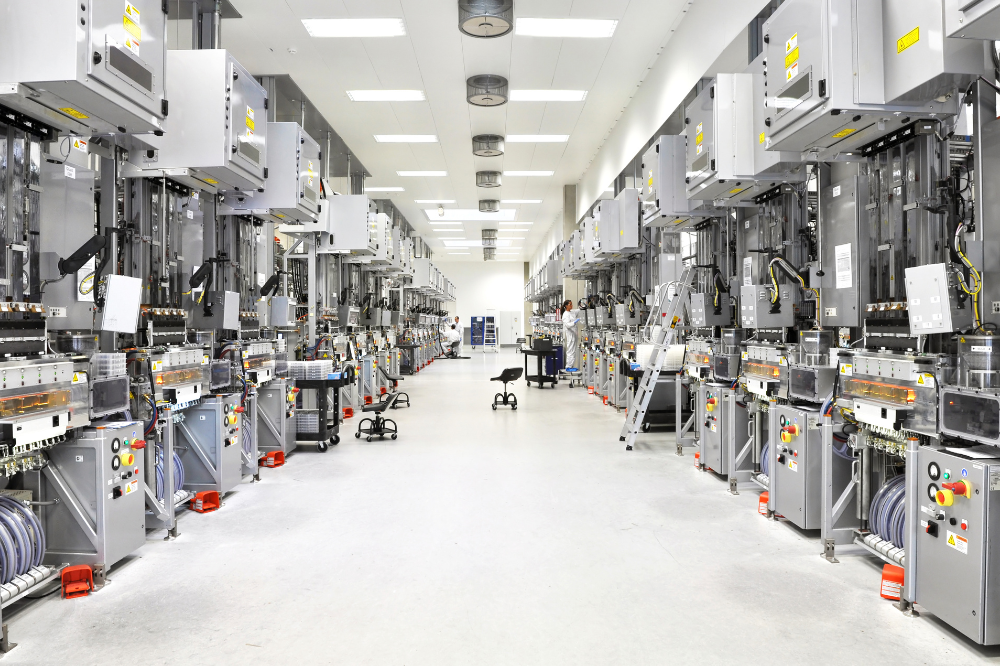Feeding the Grid: How Residential Solar Power Sales Work in Italy
In recent years, solar energy has emerged as a significant player in Italy‘s energy landscape. Many households are turning to renewable options like solar panels to reduce their dependence on traditional energy sources. This shift reflects a growing awareness of sustainable living and an interest in energy independence.
As the demand for clean energy rises, innovative solutions such as grid feeding have gained prominence. This method allows homeowners to send excess electricity generated by their photovoltaic systems back into the energy market. By doing so, they can earn credits or compensation, making solar power not just an eco-friendly choice but an economically viable one as well.
Government incentives have also played a crucial role in promoting this transition. Initiatives such as tax breaks and rebates make the installation of solar panels more accessible. Consequently, more families are exploring how net metering can benefit them financially while supporting a cleaner environment.
Overall, the intersection of residential solar technology and grid feeding is reshaping Italy’s approach to energy consumption. This transformation is not only vital for achieving energy goals but also enhances the resilience of the grid itself. By harnessing the power of the sun, individuals contribute to a more sustainable future and, ultimately, secure a more independent energy landscape.
Understanding Residential Solar Power

Residential solar power refers to the use of solar energy in homes. This clean form of energy harnesses sunlight through technology. Increasingly, homeowners are choosing solar solutions to reduce their energy costs and lessen their impact on the environment.
How Photovoltaic Systems Work
Photovoltaic systems are the backbone of solar energy production. They convert sunlight directly into electricity using solar panels. These panels contain many small units called solar cells. When sunlight hits these cells, it generates an electric current, which can be used immediately or stored for later.
Each solar panel works in tandem with an inverter. This device transforms direct current (DC) from the panels into alternating current (AC), which is what home appliances use. Many homeowners connect their systems to the grid, allowing them to share extra energy back. This process is known as grid feeding.
The Role of Solar Panels in Residential Energy Production
Solar panels play a critical role in producing renewable energy at home. They capture sunlight and convert it to usable electricity, helping to meet daily power needs. Homeowners can gain energy independence through this renewable resource.
In many regions, net metering exists. This arrangement enables users to receive credits for surplus energy fed back into the grid. As a result, homes can offset their energy costs. Furthermore, government incentives are available in various forms. These might include tax credits, rebates, or grants aimed at encouraging the installation of solar panels.
Sustainable living is a growing trend. More people are looking at ways to reduce environmental footprints. Solar energy fits perfectly within this mindset. With the right knowledge and support, anyone can shift to a more eco-friendly lifestyle.
The Mechanism of Selling Power from Household Solar Panels

Understanding the Energy Market in Italy
The energy market in Italy is changing rapidly. A mix of traditional and renewable energy sources exists. Demand for solar energy is increasing, driven by both environmental needs and consumer preferences. This shift has led to more households investing in photovoltaic systems. Many people view solar panels as a way to achieve energy independence. With government incentives, the initial cost can be manageable for families. Understanding these economic factors is vital for those considering solar.
How Grid Feeding Operates for Residential Solar Producers
Grid feeding allows homeowners to send excess energy back to the grid. When the sun shines brightly, solar panels generate more electricity than a household typically needs. This surplus power can be fed into the national grid. Households receive compensation for this contribution. It makes solar energy more appealing, allowing users to potentially lower their energy bills. Producers must ensure their systems meet certain standards to participate. This connection to the grid creates a democratic approach to energy distribution.
Overview of Net Metering and Its Implications for Consumers
Net metering is a crucial aspect of grid feeding. It enables residential customers to track the energy they produce and consume. When homes generate more solar energy than they use, they can receive credits. These credits reduce future electricity bills when the sun isn’t shining. The simplicity of this system helps families save money while promoting sustainable living. However, net metering policies can vary, and understanding local regulations is essential. Changes in policy can impact how much consumers benefit from their solar investments. Communication with energy providers is key to navigating these waters.
Government Incentives and Support for Solar Energy
Overview of Italian government policies on renewable energy
In Italy, the government has made significant strides in promoting renewable energy. The Energy Act of 2011 laid the groundwork for various initiatives. This legislation aimed to increase the share of renewables in national energy consumption. It places a strong emphasis on solar energy as a priority for sustainable living. The country has ambitious goals, targeting a reduction in carbon emissions while fostering energy independence.
Regulatory frameworks help simplify the process for installing photovoltaic systems. Solar power is seen as a way to enhance local energy production and reduce reliance on imported fuels. Tools like feed-in tariffs have been essential, offering fixed payments for energy produced. These initiatives create an environment where embracing solar becomes a collective effort.
Incentives available for residential solar power installations
Many incentives exist for homeowners looking to install solar panels. Government incentives make such projects more accessible and affordable. Tax deductions, direct subsidies, and low-interest loans are part of this support. These financial aids significantly lower initial costs for families and individuals.
Net metering is another benefit for users of renewable energy sources. This system allows owners to earn credits for excess electricity sent back to the grid. As energy prices fluctuate, this not only offers savings but also generates income. The Italian government encourages this practice, recognizing its role in promoting the energy market.
Local municipalities often have their programs too. Incentives can include additional subsidies or expedited permitting processes. In some areas, homeowners may even receive bonuses for sustainable living practices. Together, these benefits create a favorable landscape for solar energy adoption.
Impact of government support on residential solar sales
Government support has had a remarkable impact on solar adoption rates across Italy. Sales of solar panels have surged in recent years, as more homeowners recognize the benefits. Many people now view these installations not just as a trend but as a critical choice for energy independence.
The financial incentives reduce fears related to the initial investment. Homeowners are more willing to take the step toward adopting cutting-edge photovoltaic systems. Research shows that regions with strong government backing have witnessed the highest increases in solar installations.
Additionally, the shift towards renewable energy contributes to environmental awareness. Italians are becoming increasingly conscious about reducing their carbon footprint. The combination of economic and ecological incentives motivates many families to take action. Government support plays a crucial role in shaping the future of solar energy in Italy.
Energy Independence and Sustainable Living
Energy independence through solar power offers many advantages. Homeowners can reduce their reliance on traditional energy sources. This shift means less vulnerability to fluctuating energy prices. People are more in control of their energy needs. By utilizing solar energy, families can produce their own electricity, leading to both savings and less dependency on the grid.
Residential solar power plays a significant role in sustainable living. Photovoltaic systems generate clean energy, which helps reduce carbon footprints. Emphasizing renewable energy keeps the planet healthier for future generations. By generating electricity on-site, homeowners contribute to a more environmentally friendly community. This approach aligns with a growing commitment to greener practices.
Case Studies of Successful Solar Power Users in Italy
Examples abound of Italians embracing solar. In Tuscany, a family installed solar panels on their roof. Their energy savings reduced monthly bills significantly. Additionally, they participate in grid feeding, selling excess electricity back to the energy market. This clever program allows them to benefit from net metering. As a result, they see a steady return on their investment.
Another compelling case comes from a couple in Sicily. They wanted to lower energy costs while also being eco-conscious. After researching, they decided to invest in solar energy. Government incentives made the initial cost manageable, quickly recouping their investment. Now, they enjoy lower utility bills while contributing to a sustainable environment.
In both stories, energy independence empowers families. They are not just saving money, but also embracing sustainable living. These unique journeys reflect a growing trend in Italy. More residents are turning to solar as a viable alternative. With supportive policies and increasing awareness, the shift towards renewable energy is clear. It’s more than a financial decision; it’s a lifestyle choice.
Challenges and Considerations
Potential challenges in feeding power back to the grid
The process of feeding power back to the grid isn’t without its difficulties. Residential solar installations often face technical issues. Not all systems are compatible with existing grid infrastructure. When solar panels produce more energy than a home requires, proper connections are crucial. If systems aren’t set up correctly, homeowners can face issues. Intermittent power supply caused by clouds can create uncertainty. This variability can make managing household energy needs tricky.
Economic considerations for homeowners
Investing in solar panels is a big decision. Homeowners must consider the cost of installation and maintenance. Initial expenses can be high; however, savings on energy bills may help justify this. Government incentives can reduce financial strain. Programs that support renewable energy often emerge in different regions. These incentives allow families to enjoy energy independence while lowering their expenses. Moreover, local energy markets can fluctuate, affecting overall savings. Families should analyze their consumption patterns for the best approach.
Regulatory hurdles and how to navigate them
Navigating the regulatory landscape can be complex. Each region has specific rules regarding solar energy use and grid feeding. Understanding the local laws is essential. Many homeowners find it beneficial to consult with qualified experts. Photovoltaic systems typically require permits, and paperwork may vary widely. Energy producers must meet standards set by local authorities. Engaging with the community can shed light on the best practices. Networking with fellow solar users also provides invaluable insights. Online forums often serve as helpful resources for unraveling bureaucratic processes.
Final Thoughts on the Solar Revolution in Italy
Residential solar power holds tremendous significance in Italy. It not only promotes clean energy but also reduces electricity costs for homeowners. Many families have started to realize the benefits of harnessing the sun’s rays. As this trend grows, so does the opportunity for grid feeding, allowing households to supply power back to the network. This creates a more stable and sustainable energy system.
The future of solar energy in Italy looks bright. With advancements in technology and supportive government policies, solar installations are becoming increasingly common. Many Italian regions are already benefiting from incentives that encourage the adoption of solar solutions. Participation in this energy transformation is essential not just for individual savings but also for the environment.
Households should consider joining this solar movement. By investing in solar panels, they can take control of their energy usage. Reducing reliance on traditional sources helps combat climate change and fosters a cleaner atmosphere. Communities can thrive when more homes engage in renewable energy production. Every small step contributes to a larger goal of sustainable living.



